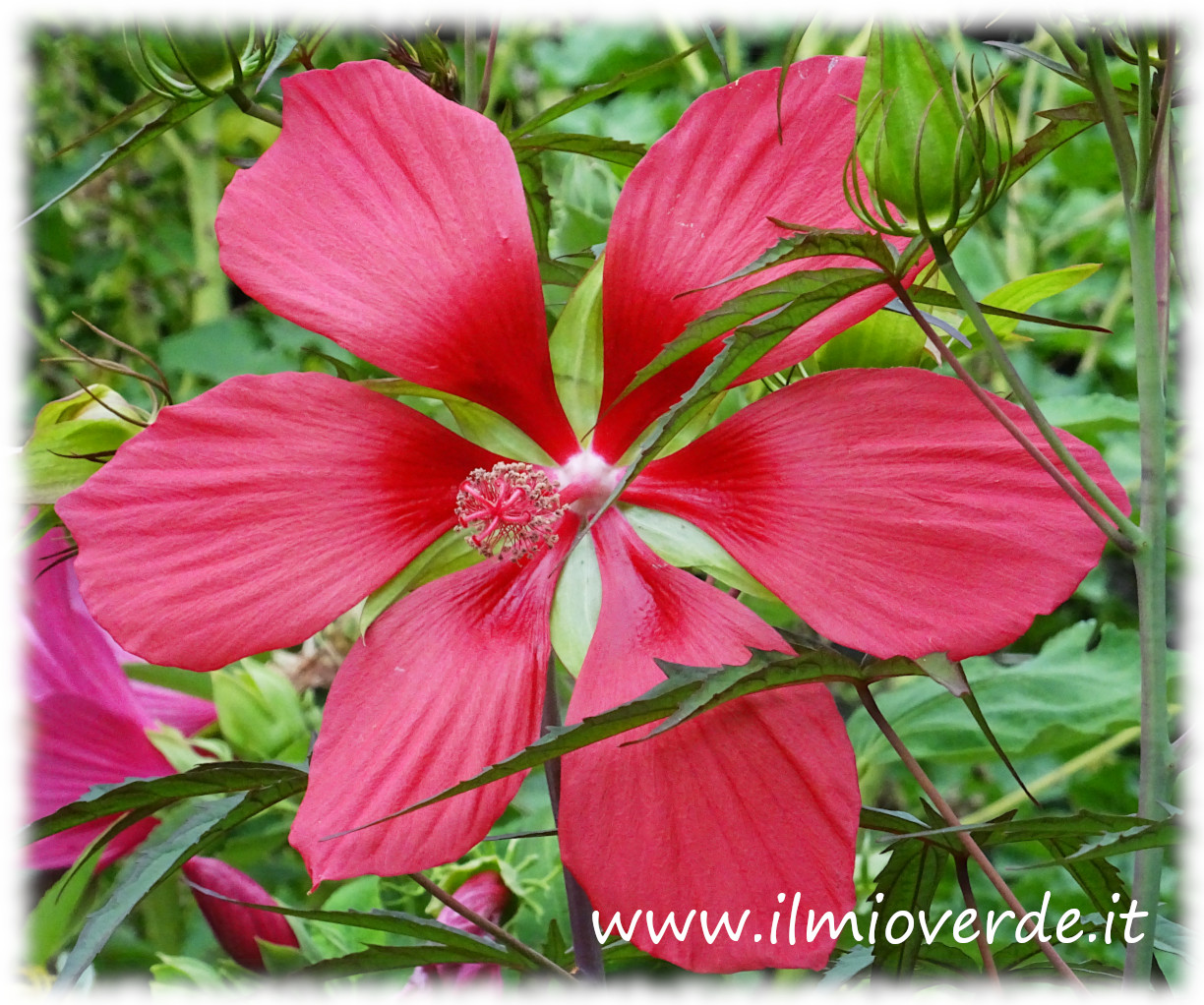“…Large, explosive, red…”
Hibiscus coccineus
Hibiscus coccineus, also known as the red hibiscus or red hibiscus, is native to the southeastern United States, where it grows naturally in wetland areas and along watercourses. The name “coccineus” comes from the Latin “coccineus,” meaning “bright red,” referring to its intense red flowers.
Scientific Classification
Kingdom: Plantae
Class: Malvales
Family: Malvaceae
Genus: Hibiscus
Species: Hibiscus coccineus
Description
This herbaceous perennial can reach heights of 1.5-2 meters and has erect, vigorous stems. The leaves are lanceolate, with serrated edges and a dark green color. The flowers, which bloom from late spring to summer, are large and bright red, with thin petals that attract bees and butterflies.
Features of Hibiscus coccineus
- Flowers: Large, red, blooming from early summer until autumn.
- Leaves: Lanceolate and serrated, dark green in color.
- Height: Up to 2 meters.
- Hardiness: Cold-resistant, but requires good sun exposure and moist soil.
Flowering
Flowering occurs in summer, usually between June and September. The flowers are solitary, with thin, intense red petals that attract pollinating insects.
- Climate and Exposure
It prefers a warm, humid climate, typical of wetland and coastal areas, but can adapt to cooler climates as long as temperatures do not fall below -5°C. It is a perennial plant that also tolerates high humidity.
Exposure
Requires good sun exposure for abundant flowering. It can also tolerate partial shade, but the flowers will be fewer. It prefers moist, well-drained soil, typically found along rivers or swamps. A soil rich in organic matter will help ensure vigorous growth.
Watering and Fertilisation
Needs abundant watering, especially during hot periods. Regular irrigation is essential to keep the soil moist. It responds well to periodic fertilisation with balanced fertilisers. An organic fertiliser or compost at the beginning of the season can benefit the plant.
Reproduction
Reproduction mainly occurs through seed cuttings or division of clumps. It can also be easily propagated from young stem cuttings in summer.
Care and Tips
In winter, the vegetative part of the plant dies back to the ground. It is advisable to protect the base with mulch to protect it from frost.
- Pruning: Prune Hibiscus coccineus in spring by removing dry stems and dead parts. Heavy pruning is not necessary, as the plant will regrow from the base.
Diseases
Resistant to many diseases, but may be susceptible to pests such as aphids and spider mites. Biological or systemic treatments can be used in case of infestations.
Use in Cooking
Hibiscus coccineus is not used in cooking; other hibiscus varieties, such as Hibiscus sabdariffa, are known for their use in beverages and teas, like hibiscus tea or karkadè, which is known for its antioxidant and diuretic properties.
Immagine di Davide Giuseppe Zannini
